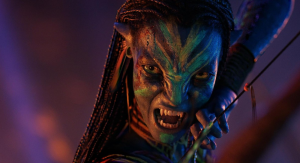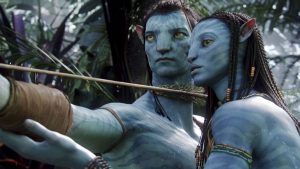
This Star Trek: Discovery article contains spoilers.
Whatever the problems in its first two seasons, Star Trek: The Next Generation ended in perfect fashion. “All Good Things…” saw Captain Picard become unstuck in time, visiting the past, present, and future of his ship.
“All Good Things…” allowed the show and fans to see just how far TNG had come over the years. It revisits the clunky inaugural season via Picard’s interactions in the past with Tasha Yar, whose death midway through season one only underscored the tumultuous first two years of the series. And by going into the future, checking in on Professor Data, Captain Beverly Picard, and journalist Geordi La Forge (married to Leah Brahms, for some reason), the show imagined future adventures beyond the series finale for our favorite characters.
By the time that present tense Picard joins his crew at the poker table, “All Good Things…” confirms what we fans always felt. This was an ensemble show with a wonderful cast, and we like seeing them all together.
That feel-good ending is actually representative of some of the criticism surrounding Star Trek: Discovery. Instead of continuing the ensemble approach that TNG and all of its followers took (Enterprise, to a lesser extent), Discovery has a single protagonist in the form of Michael Burnham. Burnham serves as the main character in every storyline, in a way not seen since the days of William Shatner stealing his co-stars’ lines for Kirk. The bridge crew of Discovery have names, a few facial expressions, and that’s about it.
So when the fourth episode of Discovery‘s final season, “Face the Strange,” gives Burnham a chance to revisit her own crew’s past as well as see the Discovery’s possible distant future, it’s a take on TNG‘s “All Good Things…” idea that hits very differently. But there’s no denying it’s also true to the ethos of what Discovery is versus The Next Generation‘s approach to storytelling in the ’90s.
In “Face the Strange,” Burnham and her new First Officer Commander Rayner are sent time jumping around the Discovery. The episode involves the treasure hunters Moll and L’ak distracting the Discovery on its chase for the Progenitor tech by infecting Burnham and Rayner with a device that thrusts them into ship’s past and future.
The episode resolves when Burnham and Rayner convince members of the Discovery crew from season one to jump to warp, which allows Stamets (whose Tardigrade DNA puts him outside of time) to remove the infecting time bug and send the duo back to their time. To do so, Rayner and Burnham have to prove that they know the bridge crew, who do not recognize Rayner and see Burnham as a mutineer.
Of course, they succeed, but not in a manner that will satisfy most viewers who remember Picard’s trip down memory lane in TNG. The crew interactions just don’t hit the same way in the Discovery version of this concept. Rayner wins over the crew not by pointing to qualities that viewers have seen by watching every season of Discovery, but by repeating exposition from the previous episode. Even many of Burnham’s pleas fall flat, heightening only the surface level of even well-developed characters like Tilly.
But then there’s the crux of Burnham’s argument. When her younger, angrier self storms onto the bridge, the current Burnham gets desperate. Her only recourse is to reveal details about the death of Ariam, the android member of the crew who sacrifices herself at the end of the season two episode “Project Daedalus.” Discovery handled Ariam’s death in the most clunky way possible, only giving the character any attention in the previous episode, manipulating audiences into caring about her sacrifice.
However, when Burnham revisits the moment in “Face the Strange,” she doubles down on the emotional appeals. Burnham tells the crew about how Ariam chose to die to save the ship, and while Tilly and Owo insist that they would never let that happen, Ariam interjects. She would gladly sacrifice herself for the others, if that was the only way to save them.
In other words, Burnham doesn’t make a logical argument about the science behind her arrival from the future, nor does she assert her authority and commandeer the ship to do what needs to be done. Rather, she leans heavy into the emotion, tugging on everyone’s heartstrings as a solution to the problem they face.
If you like your Star Trek to be logical and professional, then Burnham’s solution is just one more example of the shortcomings in Discovery. But then again, why are you watching Discovery at this point if you’re not down with that approach?
In the same way that “All Good Things…” gave TNG a victory lap to celebrate everything that the once ill-advised show was and had become, “Face the Strange” embraces Discovery‘s own unique identity. This is a show in which things happen not because they make logical sense, but because they make emotional sense.
As Discovery comes to an end, “Face the Strange” highlights the show’s unlikely path from oddball prequel to an exploration of the future of Star Trek. But as much as the show has changed cast members and settings, it’s always been about solving problems through emotional intelligence. The “All Good Things…” riff in “Face the Strange” proves that if Discovery was ever going to be the show that some Trekkies want, it should have changed a long time ago.
Star Trek: Discovery is streaming now on Paramount+.
The post Star Trek Just Delivered a Very Different Take on a Classic Next Generation Idea appeared first on Den of Geek.






